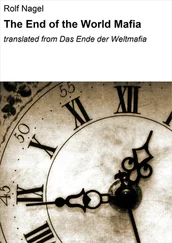Among the most exotic reworkings of Revelation, for example, was a text that supposedly originated with the so-called Sibyl of Tivoli. The sibyls were legendary women of pagan antiquity who were believed by the ancients to channel the voices of the gods and deliver messages from on high: “The Sibyl with frenzied lips, uttering words mirthless, unembellished, unperfumed,” writes Heraclitus (ca. 500 B.C.E.), “penetrates through the centuries by the powers of the gods.” 52The original Sibylline Oracles, a collection of the various enigmatic sayings of the Sibyls, were purely pagan. Later, however, both Jewish and Christian authors composed their own editions of the Sibylline Oracles in an effort to turn the pagan world to the worship of the One True God. The Sibyl of Tivoli, for example, was styled by some anonymous Christian author as a seeress who is summoned to the court of the emperor Trajan in the early second century to interpret a dream that had miraculously disturbed the sleep of one hundred Roman senators in the same night.
The dream, as deciphered by the Sibyl of Tivoli, is an elaborate prophesy of the end-times that puts a wholly new spin on the visions of Revelation. She sees the arrival of a tall and handsome man, “well put together in all of his parts,” who will call the Jews and pagans to baptism and unite the “Greeks and Romans”—that is, the eastern and western halves of the Roman Empire (or, from a medieval perspective, the eastern and western realms of Christendom). The Sibyl predicts that he will defeat the armies of Gog and Magog and rule over a world empire for exactly 112 years, an era of miraculous abundance: “A measure of wheat, a measure of wine, and a measure of oil would all come at the price of one denarius.” But, according to the Sibyl, his empire will end with the enthronement of the Anti-christ in “the House of the Lord” in Jerusalem. 53
“After this he will come to Jerusalem, and having put off the diadem from his head and laid aside the whole imperial garb, he will hand over the empire of the Christians to God the Father and to Jesus Christ his Son,” go the words of the oracle. “The Lord will shorten those days for the sake of the elect, and the Antichrist will be slain by the power of God through Michael the Archangel on the Mount of Olives.” 54
The Sibyl of Tivoli may have originated in a lost manuscript of the fourth century, but the medieval version of the text began to attract a sizable readership only in the eleventh century. Some 150 manuscripts of the oracles of the Tiburtine Sibyl, as she is also known, survive from the Middle Ages, about the same number of manuscripts as those of The Travels of Marco Polo, another medieval best-seller. And the comparison is telling: both of these books reveal that medieval readers were curious about the origin and destiny of the world in which they lived.
Not everyone who lived in or after the year 1000, in other words, was gripped with despair and terror when they contemplated the end-times. Indeed, some looked forward to the millennial kingdom with hope and joy—an approach to reading Revelation that turned out to be one of the great and enduring theological innovations in the long history of John’s little book.
Embedded in the visions of the Tiburtine Sibyl is one of the assorted apocalyptic improvisations that came to be added to the story line of Revelation in the Middle Ages—the idea of the Last World Emperor. A single all-powerful monarch, as the Sibyl suggests, would reign over the world in the last days, and the idea prompted much speculation about which of the contending kings of medieval Europe would play the role of Last World Emperor in the end-times that were surely and soon to come. The notion is found nowhere in the book of Revelation, of course, but it turned out to be yet another convenient rhetorical weapon in an era when the vocabulary of the Apocalypse was readily put to use in politics and propaganda.
For example, Frederick II (1194–1250), the German crusader-king, “was not averse to making personal use of messianic legends about the Last World Emperor as the restorer of Christianity and reformer of the church when it suited him.” 55Pope Gregory IX, by contrast, referred to his rival as “the beast that rises from the sea”—“What other Antichrist should we await when, as is evident in his works, he is already come in the person of Frederick?” 56—and excommunicated him in 1227 when the emperor delayed in setting off for the Holy Land. Frederick, as it turned out, was disqualified for both titles after he died unheroically of dysentery and the world went on without him, although it was later predicted that Frederick, like Nero, would be resurrected. 57
Another apocalyptic innovation of the thirteenth century is the notion of the Pastor Angelicus or “Angelic Pope,” a wholly benign figure who would replace the venal characters who had occupied the papal throne and caused so much consternation among the church reformers. One of the earliest references to the idea is found in the writing of Roger Bacon (ca. 1220–1292), the English Franciscan who is perhaps better known for his prescient interest in gunpowder, flying machines, and experimental science. “Forty years ago it was prophesied, and there have been many visions to the same effect, that there will be a pope in these times who will purify Canon Law and the Church of God,” he writes. “Because of the goodness, truth, and justice of this pope the Greeks will return to the obedience of the Roman Church, the greater part of the Tartars will be converted to the faith, and the Saracens will be destroyed.” 58
The title of Pastor Angelicus was applied to various reformers who sat on the papal throne, including a remarkable man called Celestine V who was elected by the College of Cardinals in 1294, “either by desperation or by revelation,” after more than two years of stalemate. 59He was an unlikely candidate in an era when the pope was as much a political and diplomatic figure as a spiritual one: Celestine was a venerable hermit-monk of the Benedictine order who shunned the lavish digs that he was entitled to occupy and lived instead in a modest hut that he built with his own hands on the palace grounds. Celestine reigned only from July to December, then abdicated, and ended up a prisoner of his successor, Pope Boniface VIII, who promptly declared open war on the Spirituals.
So Revelation may have been regarded by pious Christians as a book whose real author was Jesus Christ, but its hard-won status as a work of Holy Writ did not prevent generation upon generation of artists and storytellers, fantasists and fabulists, preachers and propagandists, from adding their own touches to the biblical scenario. It’s a practice that began in antiquity, reached a certain flowering in the High Middle Ages, but—as we shall see—never really ended. Indeed, the phantasmagorical quality of Revelation itself seems to provoke and invite the reader to come up with visions of his or her own.
Then, too, the book of Revelation offered a way to make sense of the exotic peoples, places, and phenomena that came to the attention of western Christendom through the adventures (and misadventures) of crusaders, merchants, and explorers in the late Middle Ages. Here is another crack in the wall of conventional wisdom that has been built up around the so-called Dark Ages: the medieval world was hardly confined to the walled towns, feudal estates, and cloistered monasteries of Europe itself, and the medieval imagination resorted to old and familiar texts like Revelation when it encountered something new and unfamiliar.
A medieval manuscript titled Mandeville’s Travels, for example, elaborates upon a tale told about the satanic armies of Gog and Magog: they had been confined in a defile in the Caucasus Mountains of Asia by Alexander the Great, or so the legend goes, and that’s why the wall that holds them back is dubbed “Alexander’s Gate.” Gog and Magog are actually the Lost Ten Tribes of Israel, the author continues, and he insists that the Hebrew language has been preserved and studied by the Jewish communities of Europe so that they could communicate with their long-lost brethren when the Antichrist releases them to fight in the battle of Armageddon. For the readers of Mandeville’s Travels, however, the account was more than a mere folktale: Gog and Magog were recognizable as the Tartar hordes and Saracen armies that threatened Christendom on its eastern frontier.
Читать дальше










